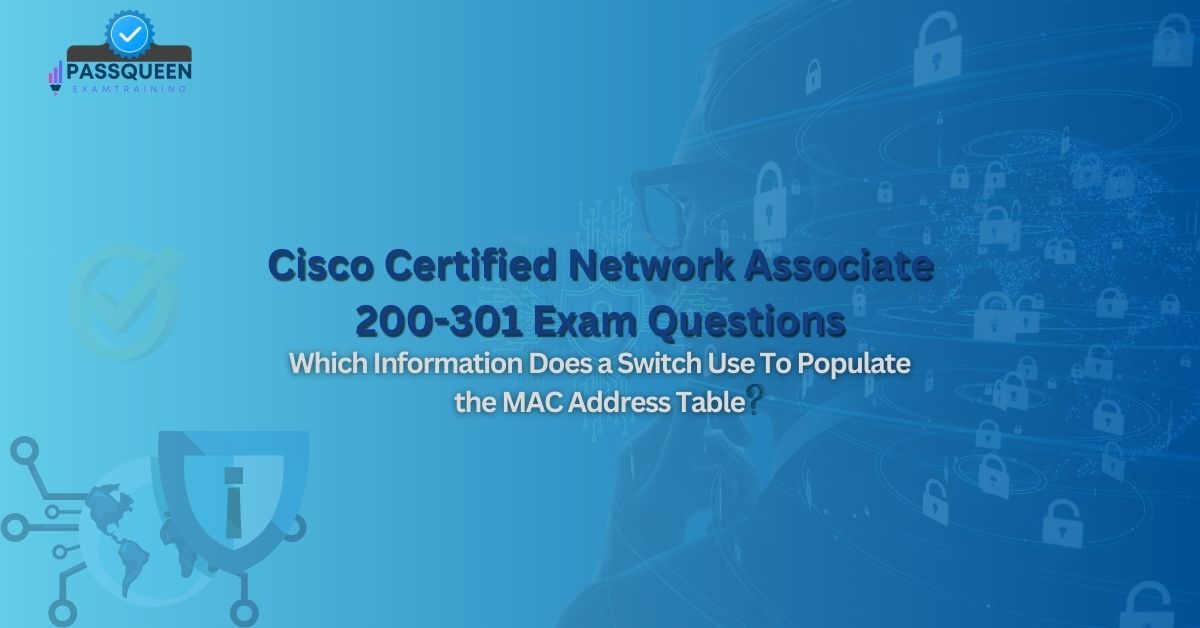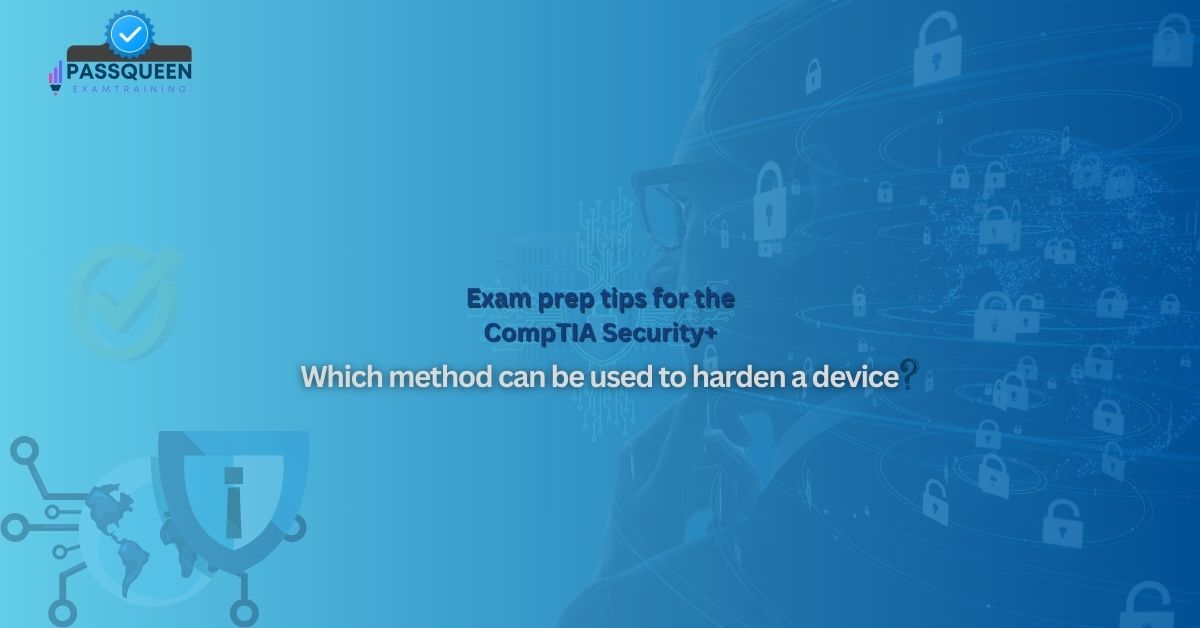Introduction
For IT professionals and certification aspirants, understanding networking fundamentals is crucial. One such fundamental concept is the MAC (Media Access Control) address, a unique identifier assigned to network interfaces for communication on a network. Among the different types of MAC addresses, multicast MAC addresses play a specialized role in enabling efficient data transmission to multiple devices simultaneously. PassQueen, a trusted resource for the latest and valid IT certification exam updates and preparation materials, provides invaluable insights into these topics.
This article offers a comprehensive overview of MAC addresses, delves into multicast MAC addresses, explains how to identify them, compares them with other MAC address types, explores their practical applications, and provides exam preparation tips for the Cisco 200-301 Exam. By the end of this article, you’ll have a clear understanding of multicast MAC addresses and their importance in networking.
MAC Addresses: A Comprehensive Overview
A MAC address is a 48-bit identifier assigned to a network interface controller (NIC) for communication on a network. It is typically represented as six pairs of hexadecimal digits (e.g., 00:1A:2B:3C:4D:5E). MAC addresses are unique to each device and are used at the data link layer (Layer 2) of the OSI model to ensure data is delivered to the correct device within a local network.
Key characteristics of MAC addresses include:
· Uniqueness: Each MAC address is globally unique, ensuring no two devices have the same address.
· Permanent Assignment: MAC addresses are usually hardcoded into the NIC by the manufacturer.
· Layer 2 Communication: MAC addresses are used for communication within the same network segment.
MAC addresses are essential for network communication, and understanding their types and functions is critical for IT professionals.
Understanding Multicast MAC Addresses
Multicast MAC addresses are a special type of MAC address used to deliver data to a group of devices rather than a single device (unicast) or all devices (broadcast). Multicast is particularly useful for applications like video streaming, online gaming, and live broadcasts, where the same data needs to be sent to multiple recipients simultaneously.
Structure of Multicast MAC Addresses
Multicast MAC addresses have a specific structure that distinguishes them from unicast and broadcast addresses:
· The first 25 bits of a multicast MAC address are fixed and always start with 0100.5E in hexadecimal.
· The remaining 23 bits are used to map the multicast IP address to the MAC address.
For example, a multicast MAC address might look like 01:00:5E:00:00:01.
Benefits of Multicast MAC Addresses
· Efficiency: Multicast reduces network traffic by sending a single stream of data to multiple recipients.
· Scalability: It supports large-scale applications like video conferencing and IPTV.
· Bandwidth Optimization: By avoiding duplicate transmissions, multicast conserves bandwidth.
Identifying Multicast MAC Addresses
Identifying multicast MAC addresses is essential for network configuration and troubleshooting. Here’s how to recognize them:
1. First Byte:
The first byte of a multicast MAC address always has the least significant bit (LSB) of the first hexadecimal digit set to 1. For example, 01:00:5E:00:00:01 is a multicast MAC address because the first byte (01) has the LSB set to 1.
2. Fixed Prefix:
Multicast MAC addresses always start with the prefix 01:00:5E. This is a key identifier for multicast traffic.
3. Mapping to IP Addresses:
Multicast MAC addresses are derived from multicast IP addresses. The lower 23 bits of the multicast IP address are mapped to the lower 23 bits of the MAC address.
For example, the multicast IP address 224.0.0.1 maps to the multicast MAC address 01:00:5E:00:00:01.
Comparison with Other MAC Address Types
To fully understand multicast MAC addresses, it’s important to compare them with other types of MAC addresses:
1. Unicast MAC Addresses:
o Used for one-to-one communication.
o The first byte has the LSB set to 0.
o Example: 00:1A:2B:3C:4D:5E.
2. Broadcast MAC Addresses:
o Used for one-to-all communication within a network.
o The address is always FF:FF:FF:FF:FF:FF.
o Example: Used for ARP (Address Resolution Protocol) requests.
3. Multicast MAC Addresses:
o Used for one-to-many communication.
o The first byte has the LSB set to 1.
o Example: 01:00:5E:00:00:01.
Practical Applications of Multicast MAC Addresses
Multicast MAC addresses are widely used in various networking scenarios. Here are some practical applications:
1. Video Streaming:
Multicast is used to deliver live video streams to multiple viewers simultaneously, reducing bandwidth usage.
2. Online Gaming:
Game servers use multicast to send real-time updates to multiple players.
3. IP Television (IPTV):
IPTV services rely on multicast to broadcast channels to subscribers.
4. Video Conferencing:
Multicast enables efficient delivery of video and audio streams in large-scale conferences.
5. Network Management:
Protocols like IGMP (Internet Group Management Protocol) use multicast to manage group memberships and optimize traffic.
Exam Prep Tips for Cisco CCNA 200-301 Certification
For IT certification aspirants, understanding multicast MAC addresses is essential for the Cisco CCNA 200-301 exam. Here are some tips to help you prepare:
1. Understand the Basics:
Be familiar with the structure and purpose of MAC addresses, including unicast, broadcast, and multicast.
2. Learn the Format:
Memorize the format of multicast MAC addresses, including the fixed prefix 01:00:5E.
3. Practice Mapping:
Practice mapping multicast IP addresses to multicast MAC addresses using the lower 23 bits.
4. Study Use Cases:
Understand the practical applications of multicast MAC addresses, such as video streaming and IPTV.
5. Review Exam Objectives:
Focus on the exam objectives related to Layer 2 addressing and multicast communication.
6. Take Practice Tests:
Use Practice Tests to assess your knowledge and identify areas for improvement.
Conclusion
Multicast MAC addresses are a critical component of modern networking, enabling efficient one-to-many communication for applications like video streaming, online gaming, and IPTV. For IT professionals preparing for certifications like the Cisco CCNA 200-301, understanding multicast MAC addresses is essential. PassQueen, with its up-to-date exam resources and preparation materials, is an invaluable tool for mastering these concepts and achieving certification success.
By understanding the structure, identification, and applications of multicast MAC addresses, you’ll be well-equipped to tackle exam questions and apply this knowledge in real-world networking scenarios. Whether you’re studying for an exam or working in the field, multicast MAC addresses are a key concept to master.
Sample Cisco 200-301 Exam Questions
Question: Which is a multicast MAC address?
A. 00:1A:2B:3C:4D:5E
B. FF:FF:FF:FF:FF:FF
C. 01:00:5E:00:00:01
D. 02:00:5E:00:00:01
Correct Answer:
C. 01:00:5E:00:00:01
Explanation:
A multicast MAC address always starts with the prefix 01:00:5E and has the least significant bit (LSB) of the first byte set to 1. The address 01:00:5E:00:00:01 meets these criteria, making it a multicast MAC address. The other options are either unicast (00:1A:2B:3C:4D:5E) or broadcast (FF:FF:FF:FF:FF:FF).
This article provides a detailed exploration of multicast MAC addresses, their significance, and their relevance to IT certification exams like the Cisco CCNA 200-301. With PassQueen’s resources, you’ll be well-prepared to master this topic and excel in your certification journey.












